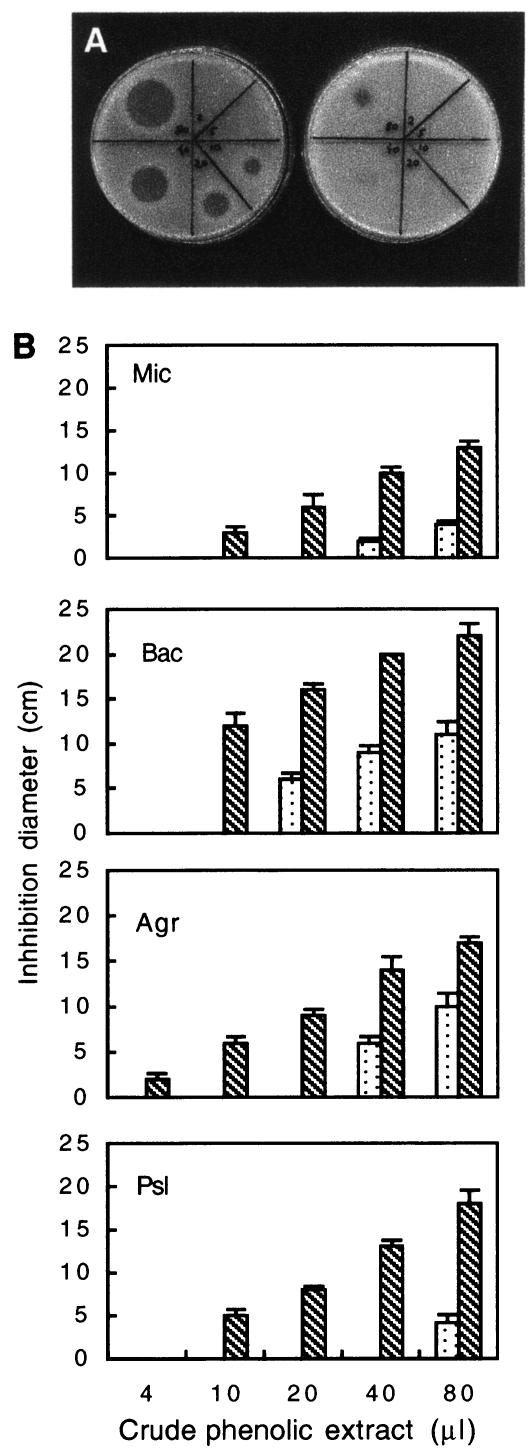FIG. 7.
(A) Tryptic soy agar plates showing a dose-dependent bioassay (2 to 80 μl corresponding to 5 to 200 mg [fresh weight] of leaf tissue) of the aglycone fraction obtained by acid hydrolysis of the crude phenolics extract of cucumber leaves. The extraction was carried out 48 h postchallenge with P. syringae pv. lachrymans. Shown are results for plants elicited with T. asperellum (T+Psl+; left plate) and nonelicited plants (T−Psl+; right plate). The bioassay was executed with P. syringae pv. lachrymans as the test microorganism. (B) Bioassay comparing the antimicrobial capacity of 2 to 80 μl of the aglycone fraction obtained by acid hydrolysis of crude phenolics extract of cucumber leaves 48 h postchallenge with P. syringae pv. lachrymans. Shown are results for plants elicited with T. asperellum (T+Psl+; dotted columns) and nonelicited plants (T−Psl+; striped columns). The antimicrobial activity was assayed on P. syringae pv. lachrymans (Psl), Agrobacterium tumefaciens (Agr), Bacillus megaterium (Bac), and Micrococcus luteus (Mic) as the test microorganisms. Columns represent the mean inhibition diameter of two independent experiments ± SD.

